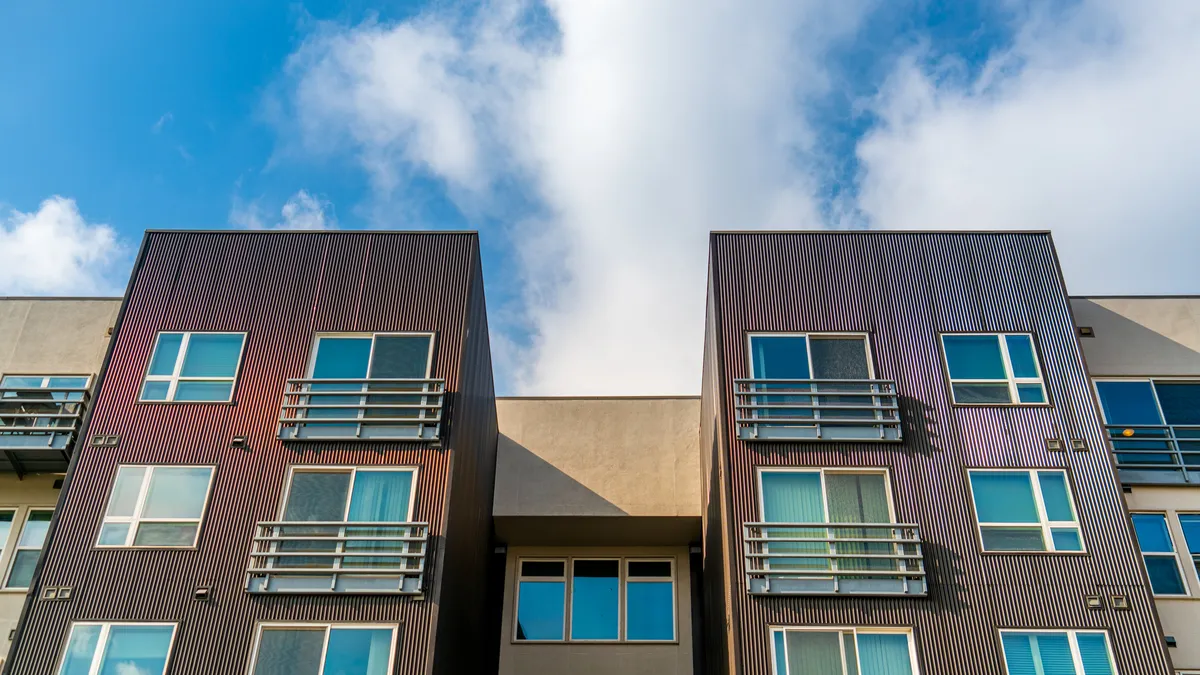The national average multifamily rent rose by $6 from April to May, up to $1,761, according to Yardi Matrix’s latest National Multifamily Report. Year-over-year rent growth held steady at 1.0%, a point from which it has barely moved over the past year.
At the major metro level, rent growth remains strongest in the Northeast and Midwest. New York City still leads YOY rent growth at 5.7%, followed by Kansas City, Missouri, at 4.0%. Austin, Texas, remains at the bottom at -5.2%, followed by Denver at -3.5% and Phoenix at -3.4%.
However, on a month-over-month basis, Western and Sun Belt metros with historically high deliveries and declining rents — including Denver, San Francisco, Dallas and Austin — saw positive growth in May. In Austin, which saw a 9.1% increase in supply this year, rents rose by 0.2% in May, or $3. This follows a more than $200 price drop in the city over the past two years, according to Yardi.
| Market | YOY rent growth, May 2025 | YOY rent growth, April 2025 | Difference |
|---|---|---|---|
| New York City | 5.7% | 5.8% | -0.1 |
| Kansas City, Missouri | 4.0% | 3.5% | 0.5 |
| Philadelphia | 3.4% | 3.6% | -0.2 |
| Columbus, Ohio | 3.3% | 3.7% | -0.4 |
| Chicago | 3.1% | 3.3% | -0.2 |
| Detroit | 3.1% | 3.0% | 0.1 |
| New Jersey | 3.0% | 2.4% | 0.6 |
| Indianapolis | 2.8% | 3.2% | -0.4 |
| Twin Cities | 2.7% | 2.7% | 0 |
| Washington, D.C. | 2.2% | 2.5% | -0.3 |
SOURCE: Yardi Matrix
The national occupancy rate fell slightly in April to 94.4%. (Occupancy data is current to the previous month.) While a heavy supply pipeline is causing occupancy to slip in some metros, strong demand counterbalances the impact, according to Yardi.
Single-family rents rose by $3 over the same period, up to $2,183, according to the report. Following weaker performance over the winter, BTR rents have now risen four months in a row, and are close to the all-time high average of $2,185 set in May 2024.
Despite uncertainty in the economy and financial markets, fundamentals remained strong for multifamily in May, according to Yardi. The impact of tariffs on the market is uncertain, but economic and renter financial health are solid, with 177,000 jobs added in April and wages growing faster than inflation or rent.
“The impact (good or bad) to the economy of the administration’s policies — including higher tariffs, federal layoffs and cuts to or elimination of grant programs for segments including health care, scientific research and education — will likely not show up in data for months or quarters into the future,” the report states. “But for now, the market is guardedly optimistic.”











